Wild Relatives: Not Just in Your Family

30 May 2019
Marie Haga | Marie's Corner
Most of us have some wild relatives in our families. I can think of some in my own. It’s the same with crops – they too have their wild sisters and brothers, cousins, aunts and uncles. I will not speak about the wild relatives in my family in this Corner. Actually, the crop ones are much more interesting.
The Crop Trust is privileged to be managing a major project on crop wild relatives. The project is funded by Norway and is in the ninth of a planned 10 years. Crop wild relatives often have useful traits that are not found in their domesticated counterparts and they can prove to be the game changers we need to develop resilient crops in the future.
The project has supported national genebanks in collecting and conserving crop wild relatives in 25 countries. It has also forged partnerships among more than 100 research institutes in 48 countries to pre-breed 19 different crops. Pre-breeding is the beginning of the process of using crop wild relatives to improve their cultivated cousins. It’s complicated: you have to move those potentially game-changing traits from one to the other without bringing along the traits you don’t want. There are plenty of those. What use would be a heat-tolerant eggplant, say, if it also had huge thorns and a terrible taste?
As the project draws to a close, the big question for the past six months has been “how have we done?” Well, I’m pleased to say that we’ve done very well indeed. A review team of external experts reached out to Crop Wild Relatives Project partners in more than 50 countries – through e-surveys, phone interviews and video conferences. They also visited partner organizations in 10 countries, including Chile, India, Kenya, and Morocco.
Reviews like this provide us with an invaluable independent assessment of the work we do. They also give us an honest glimpse of how those we work with perceive us, and if they think we are succeeding in our mission to contribute to safeguarding and using crop diversity.
Not that I ever doubted it, but the external review demonstrated that the Crop Trust truly has the experience and partnerships in place to drive complex projects. Success breeds expectations, and the review team also advised that the Crop Trust, “with its insights and intelligence, coupled with its admirable communication capabilities, should continue to play a constructive and supportive role in this space.”
The success of the CWR Project and great interest in pre-breeding were clearly on display in Morocco in April. Our CWR team and partners were much involved in the First International Experts Workshop on Pre-breeding Utilizing Crop Wild Relatives, organized by the International Center for Agricultural Research in the Dry Areas (ICARDA). During the three-day event, many of our partners presented their latest results to a group of 80 participants from 30 countries. And their work created quite the buzz.
Things were buzzing outside of the workshop too, according to my colleagues who traveled to the Atlas Mountains, where our pre-breeding collaborators from ICARDA and Morocco's National Institute of Agricultural Research (INRA) are sharing with farmers types of durum wheat, barley and lentil that have a bit of the beneficial traits found in their wild relatives bred into them. The scientists them ask the farmers select the ones they like best. Farmers’ opinions matter: in fact, at the end of the day, they’re what matters most. Farmers decide what ultimately grows on their fields.
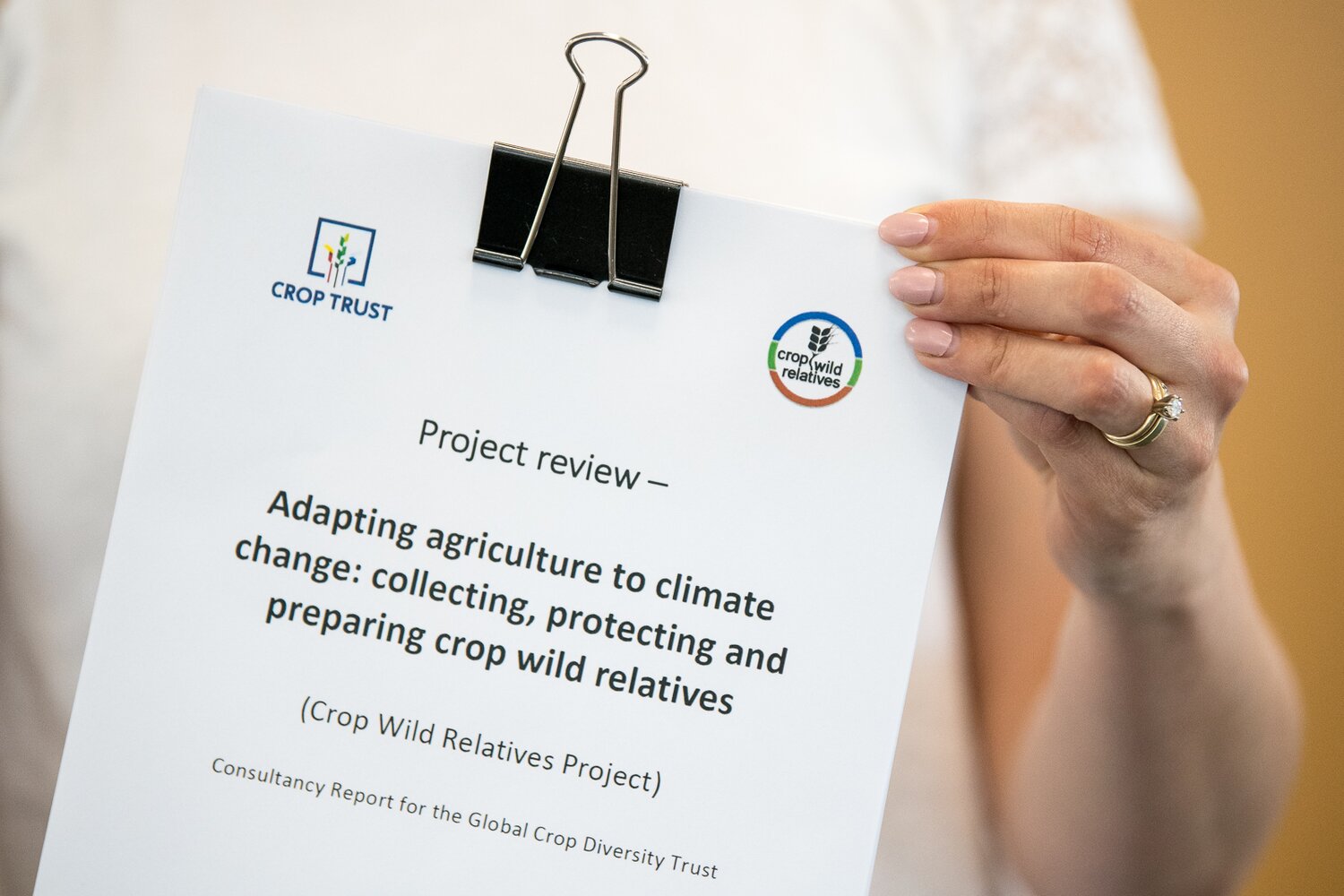
Crop Wild Relatives Project Review. Photo: Neil Palmer/Crop Trust
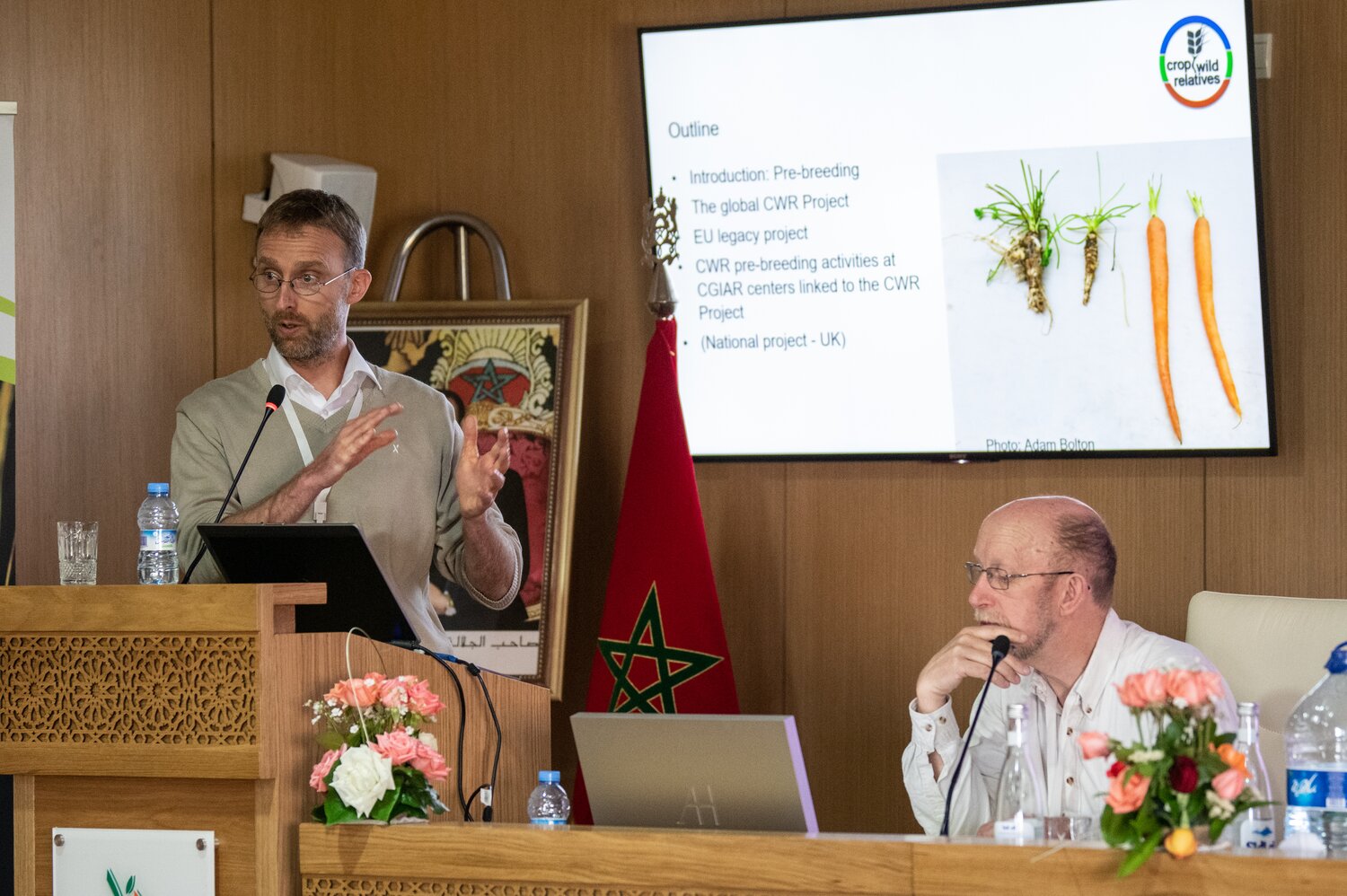
The Crop Trust's Benjamin Kilian presents at the First International Experts Workshop on Pre-breeding Utilizing Crop Wild Relatives, ICARDA, Rabat, Morocco, 24-26 April 2019. Photo: Michael Major/Crop Trust
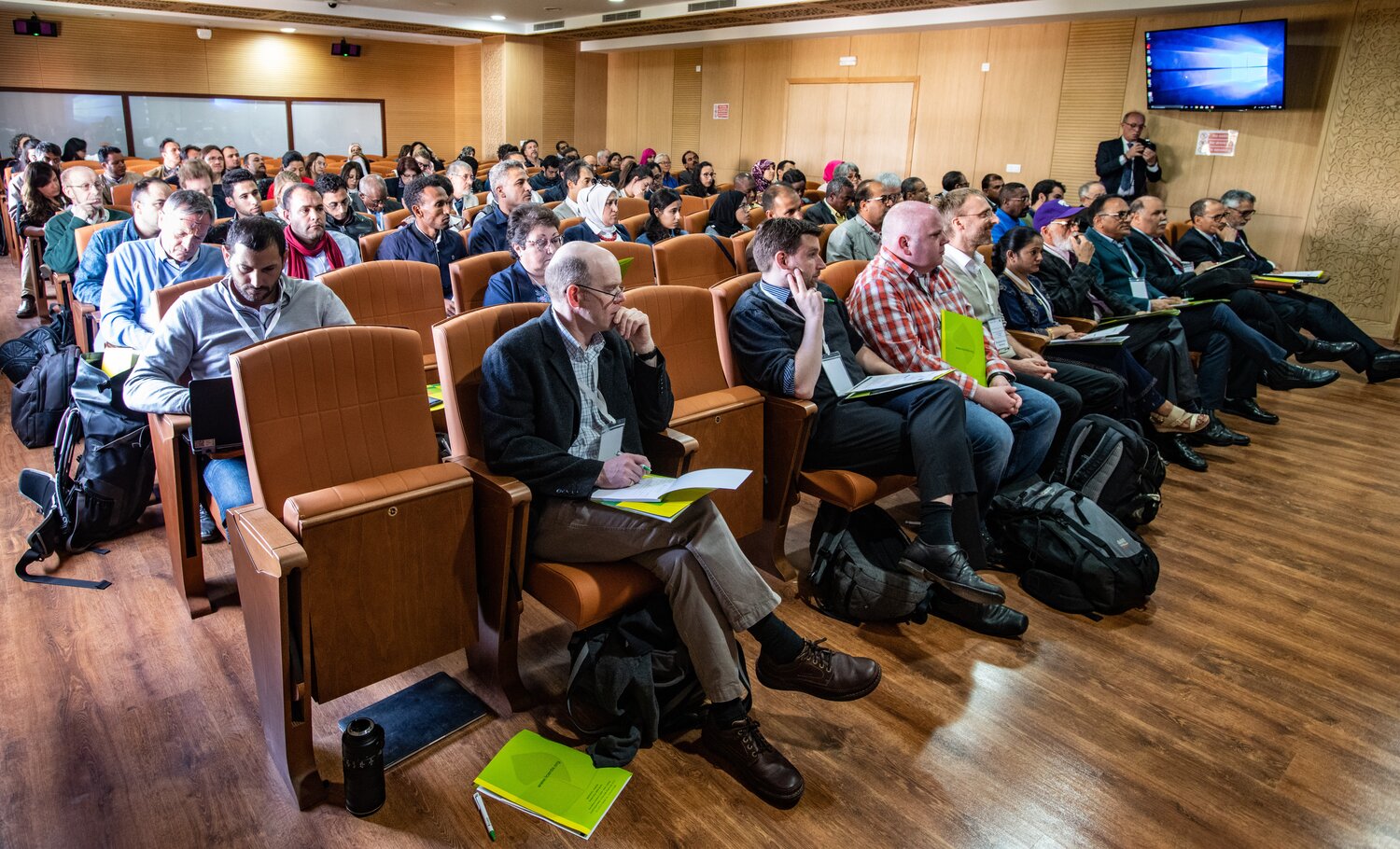
The First International Experts Workshop on Pre-breeding Utilizing Crop Wild Relatives was held at INRA's new conference facilities in Rabat, Morocco. Photo: Michael Major/Crop Trust
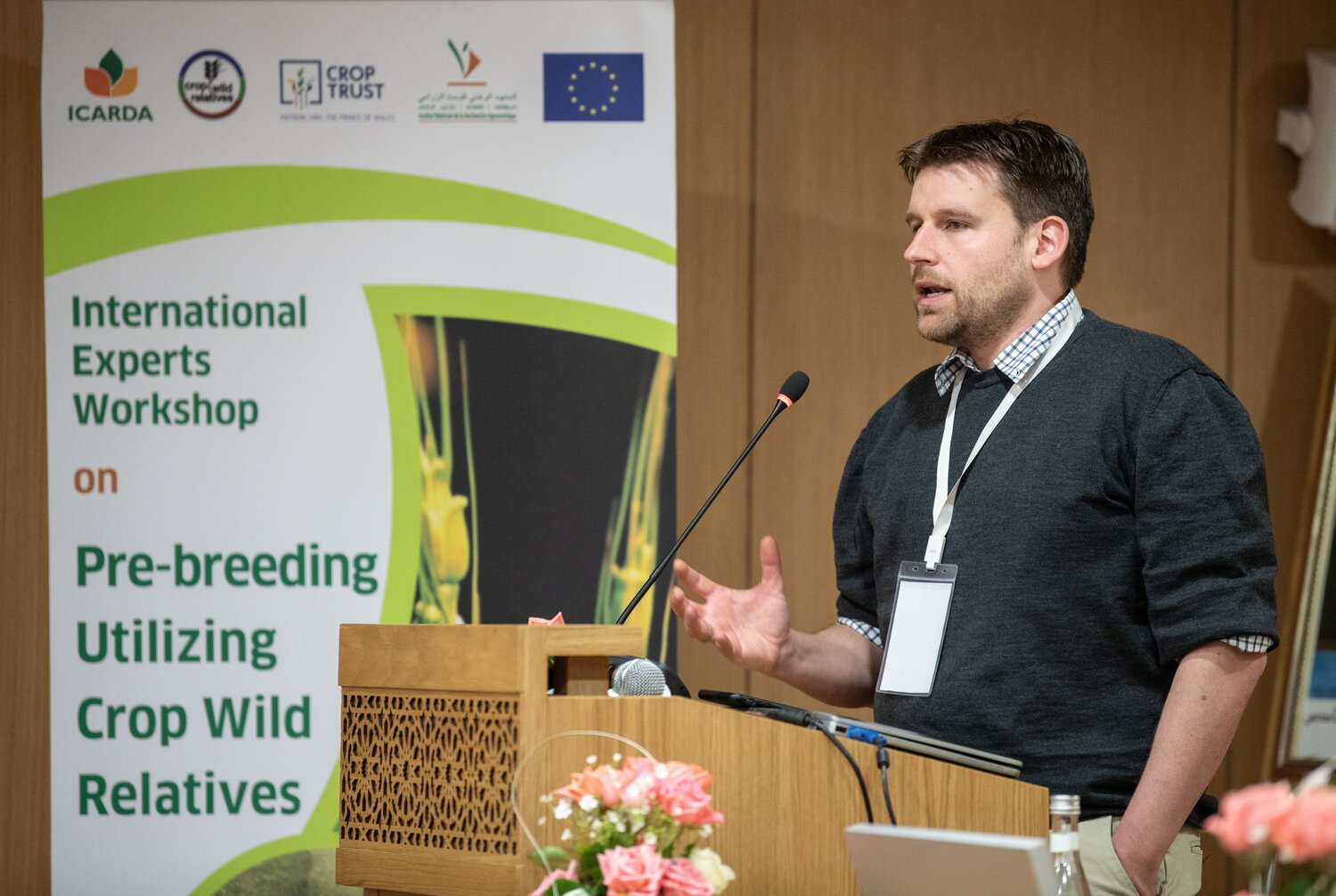
The Crop Trust's Hannes Dempewolf provided closing statements at the First International Experts Workshop on Pre-breeding Utilizing Crop Wild Relatives, ICARDA, Rabat, Morocco, 24-26 April 2019. Photo: Michael Major/Crop Trust
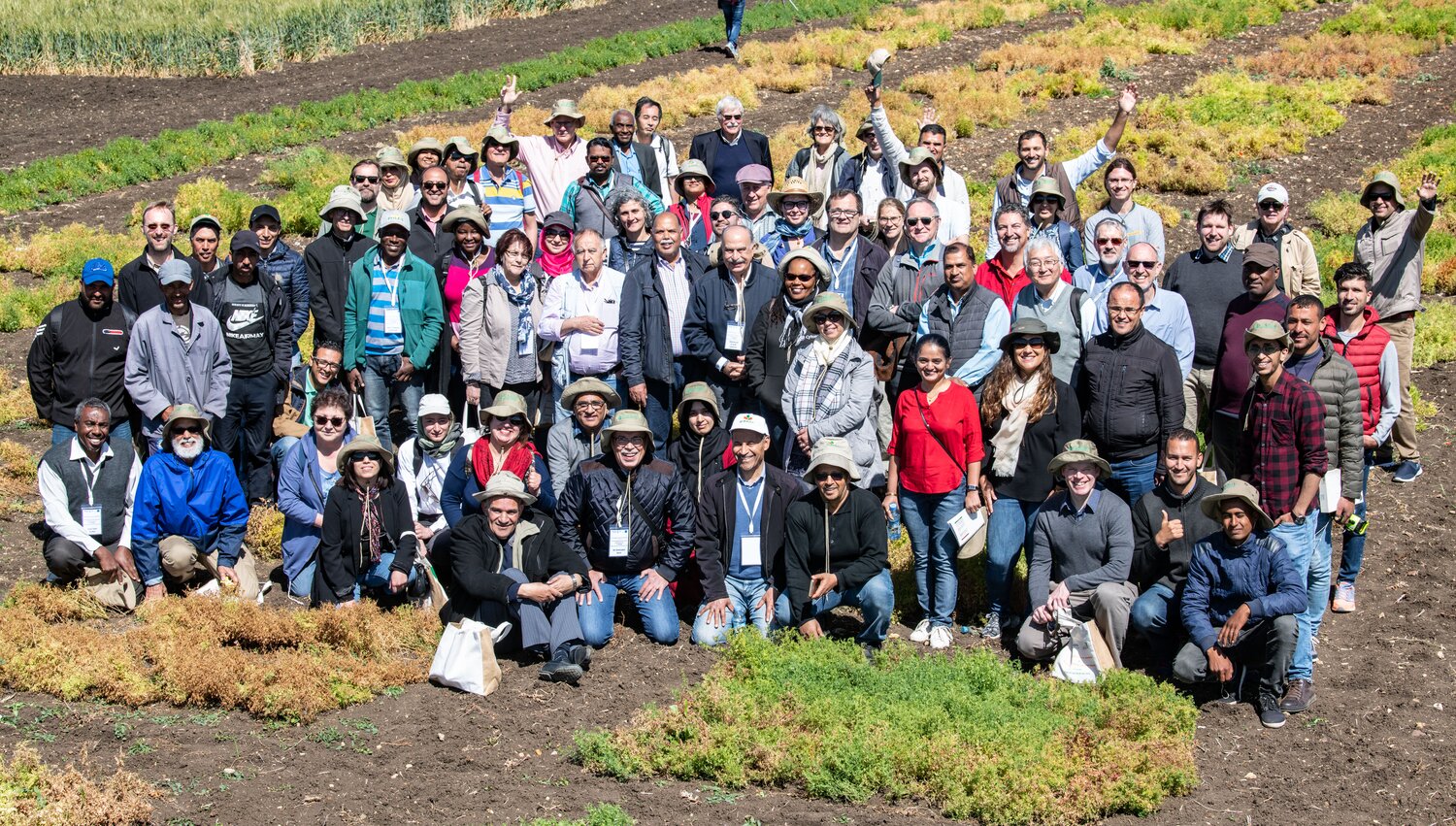
Participants of the workshop visited the Marchouch station to see ICARDA's CWR-derived material in the field. Photo: Michael Major/Crop Trust
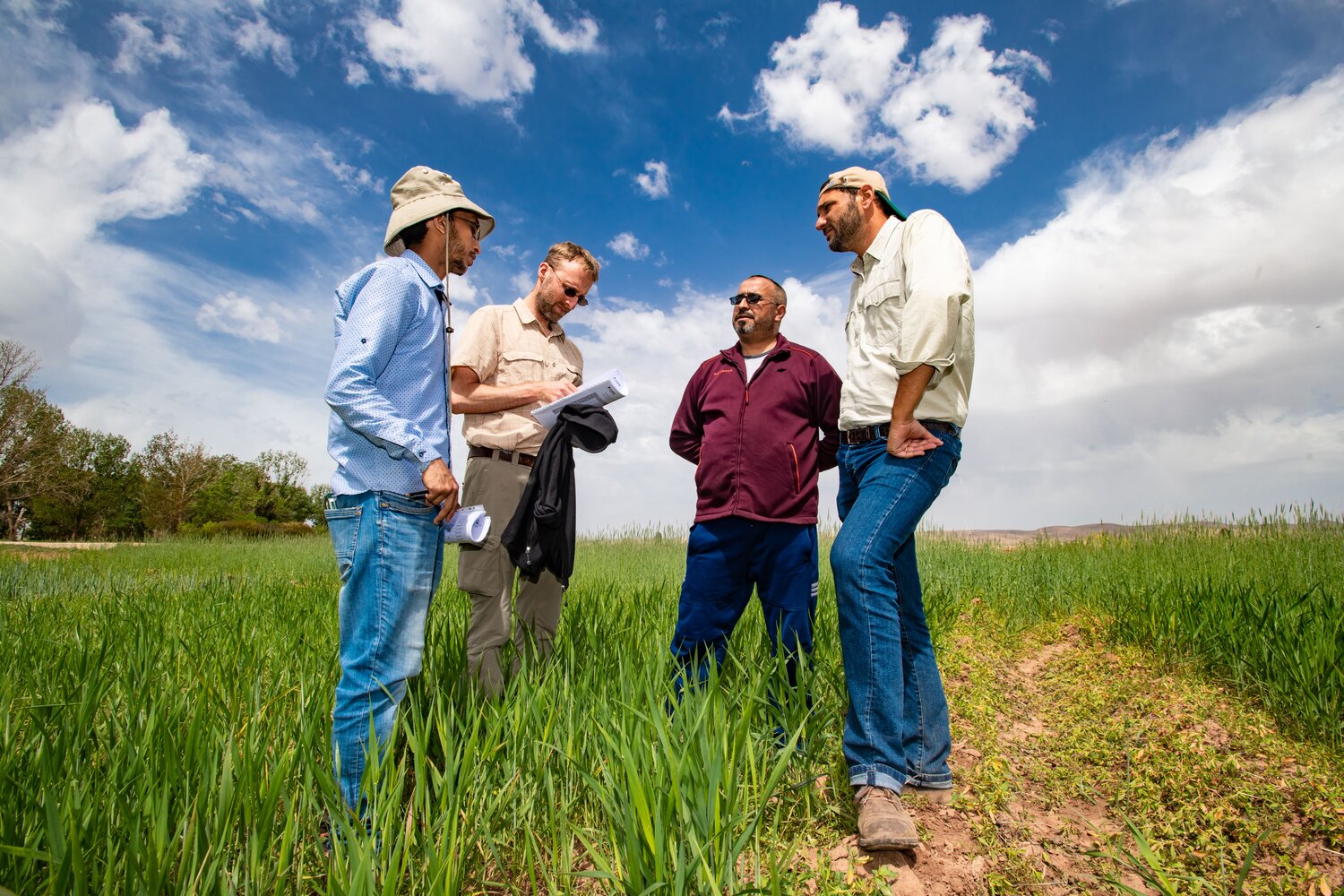
Visit to the farm of Haddou Aaziz (second from right) near Guigou, Morocco in the Atlas Mountains. Haddou is a participant of the DIIVA project. Photo: Michael Major/Crop Trust
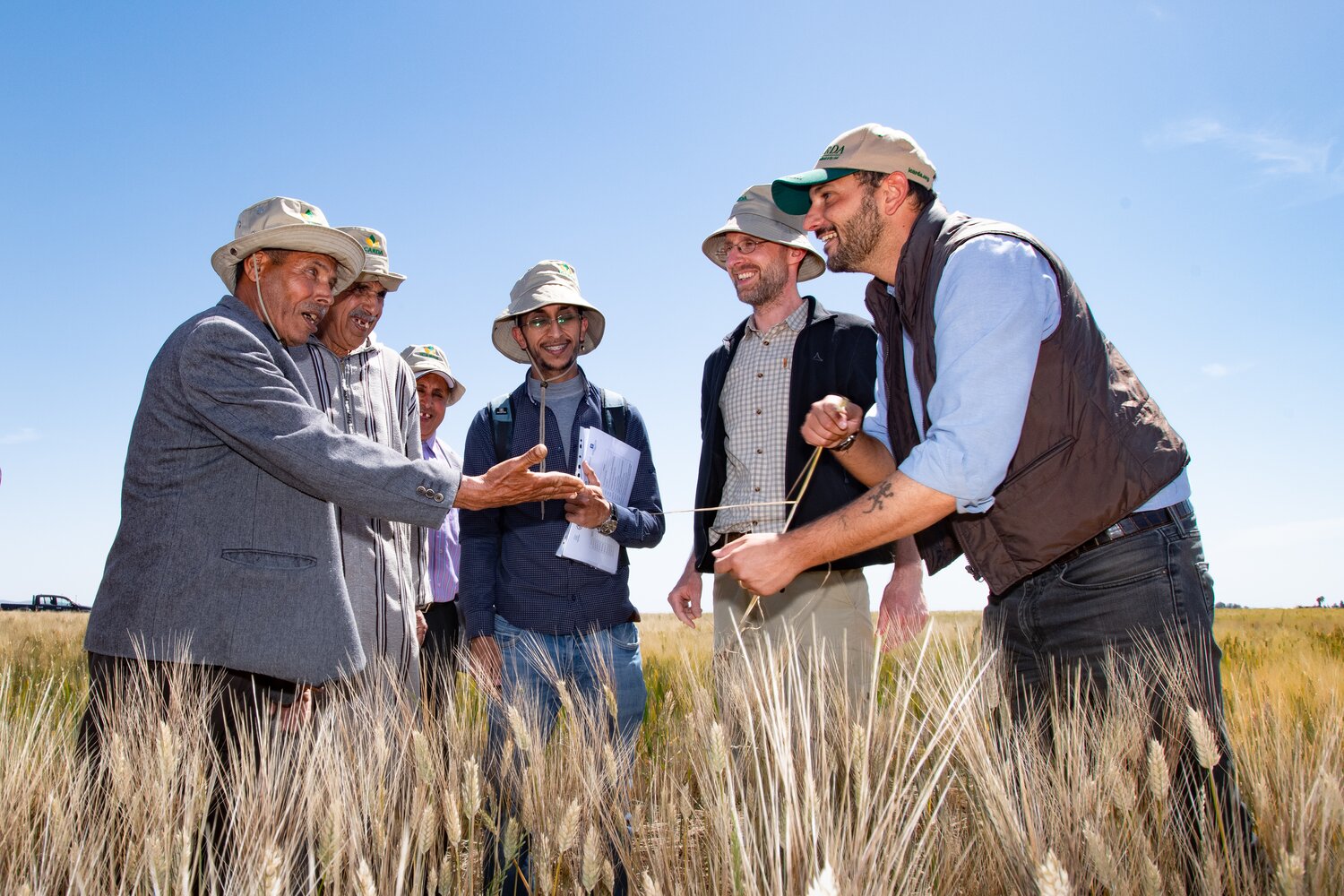
ICARDA scientists working in the DIIVA Project visit on-farm trials near Marchouch, Morocco to gather opinions of farmers about CWR-derived durum wheat lines. Photo: Michael Major/Crop Trust
This work is urgent because we are losing crop wild relatives at a high speed around the world. The reasons are many: the way we do modern agriculture, habitat destruction caused by urbanization and other factors, and climate change to mention a few. It was therefore an honor to open a new part of the Potato Park in Peru a few days ago jointly with the Vice-President of Peru, Mercedez Aráoz.
The new part of the Potato Park systematically hosts various wild relatives of the potato in their natural habitats at an altitude of just over 4000 meters above sea level. Potato is considered to be the third or the fourth most important crop in the world. Its wild relatives are already being used to make it more resilient to climate change and resistant to diseases. To continue to do so, it is important that they survive, both in situ in places like the Potato Park, and ex situ in genebanks. We congratulate the Potato Park on the initiative and wish everyone involved success in the time ahead.
We would also like to thank the hard work of our Crop Wild Relatives Project partners around the world, who have helped make the project a success, and one likely to benefit farmers around the world, including the Potato Park itself.
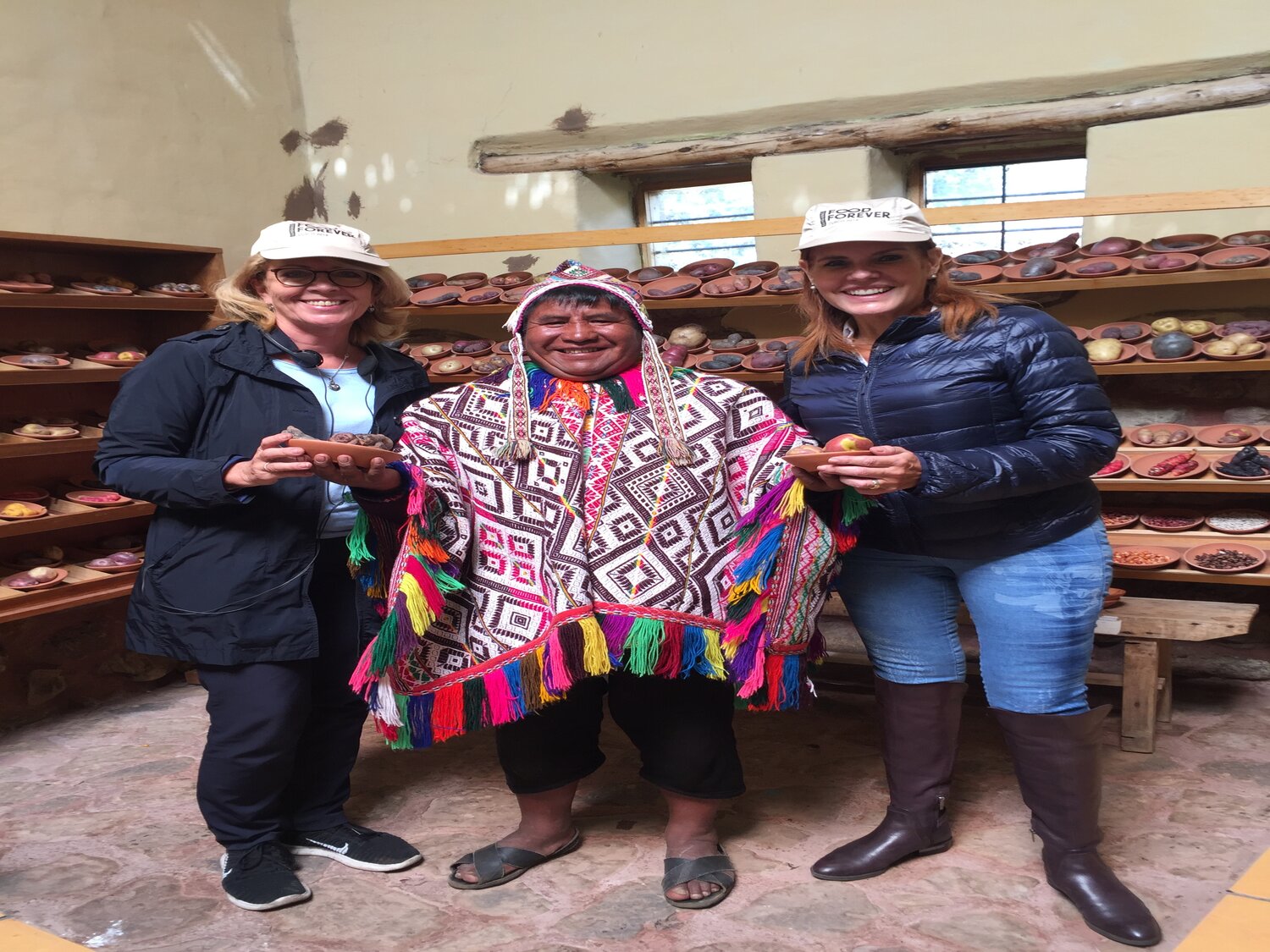
Potato diversity at the Potato Park in Cusco, Peru.
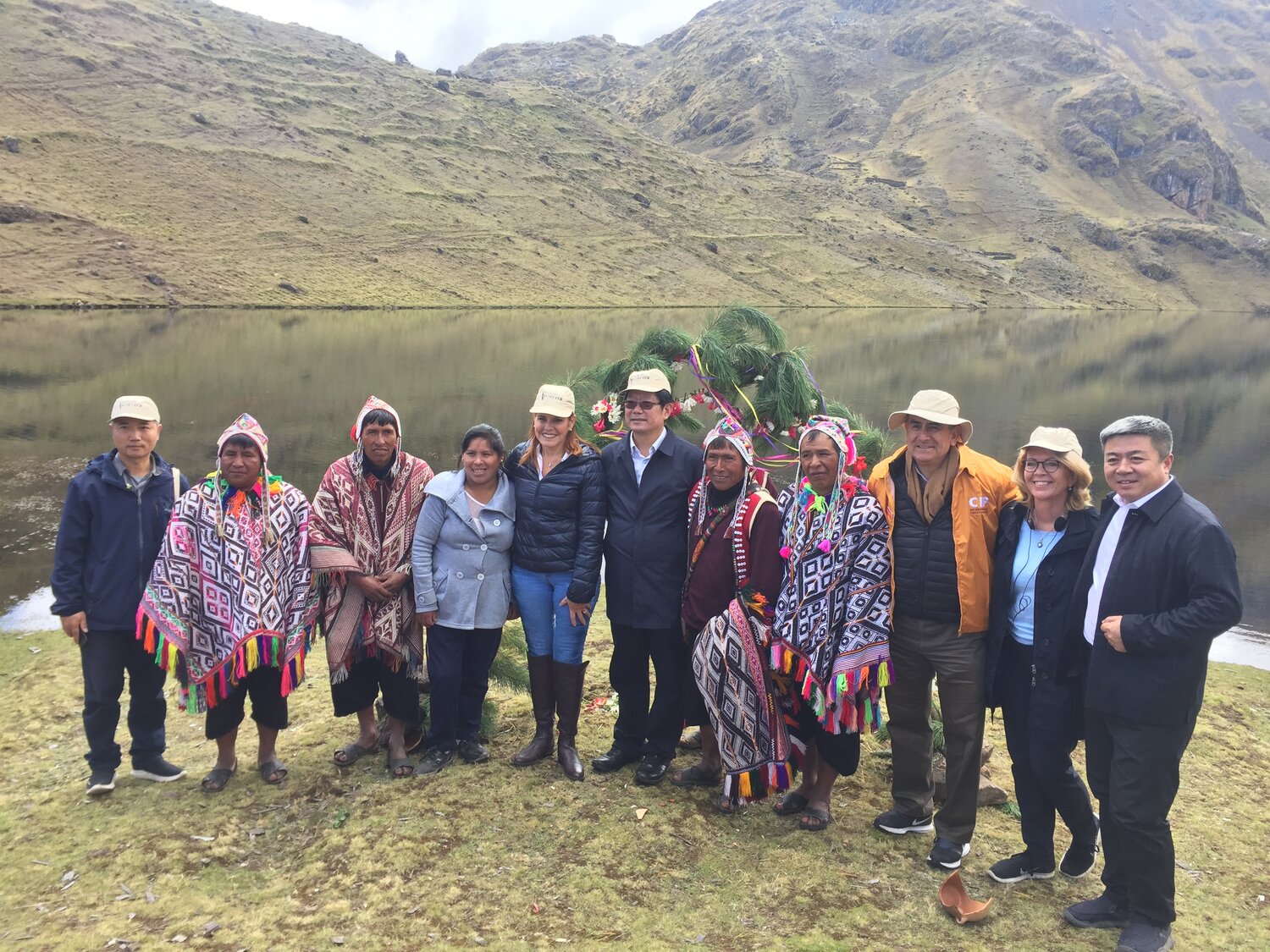
Crop Trust Executive Director, Marie Haga, and Vice President of Peru, Mercedes Aráoz, inaugurate the wild potato reserve at the Potato Park in Cusco, Peru.

Crop Trust Executive Director, Marie Haga, and Vice President of Peru, Mercedes Aráoz, inaugurate the wild potato reserve at the Potato Park in Cusco, Peru.

Crop Trust Executive Director, Marie Haga, and Vice President of Peru, Mercedes Aráoz, inaugurate the wild potato reserve at the Potato Park in Cusco, Peru.
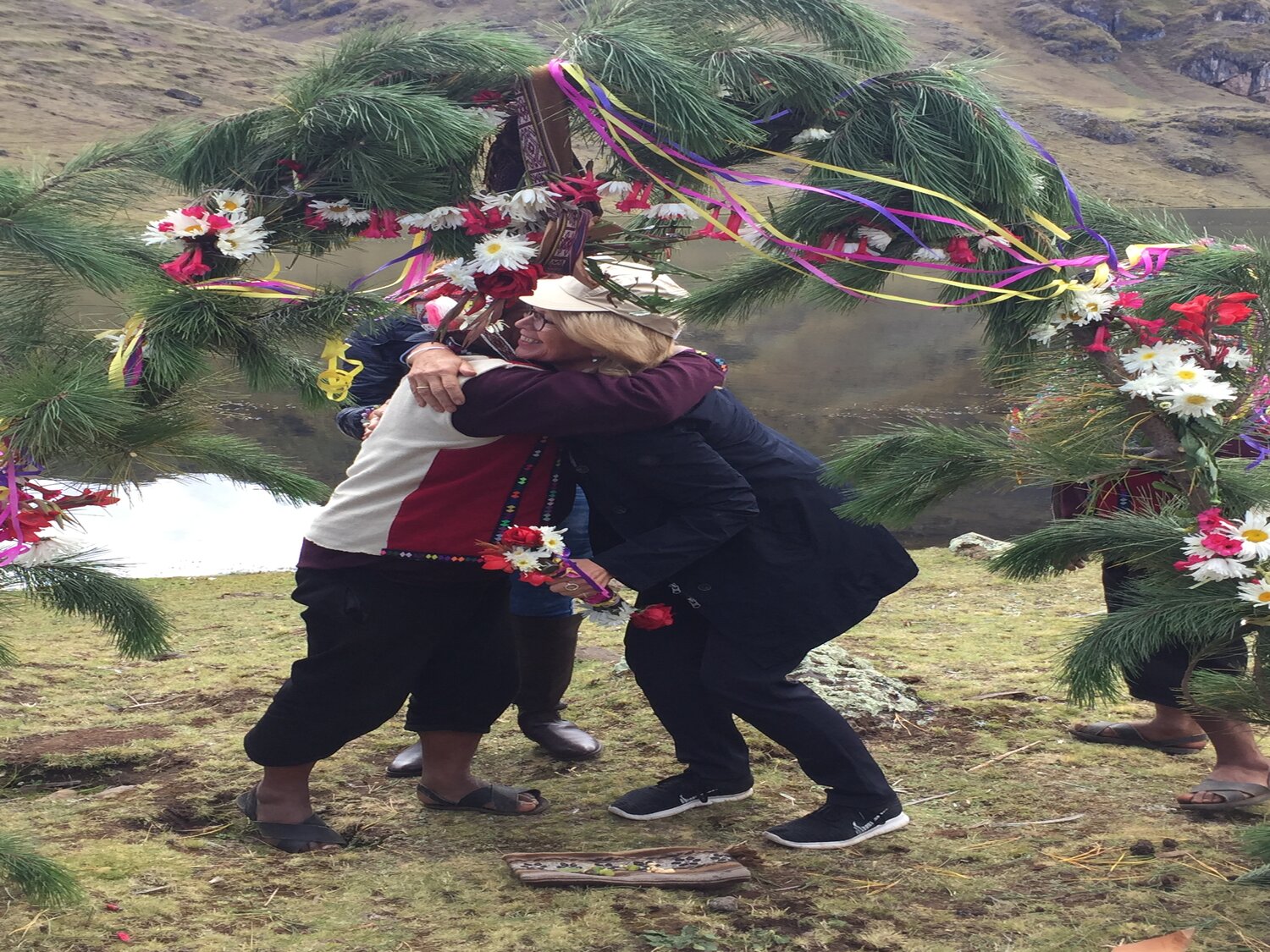
Crop Trust Executive Director, Marie Haga, and Vice President of Peru, Mercedes Aráoz, inaugurate the wild potato reserve at the Potato Park in Cusco, Peru.
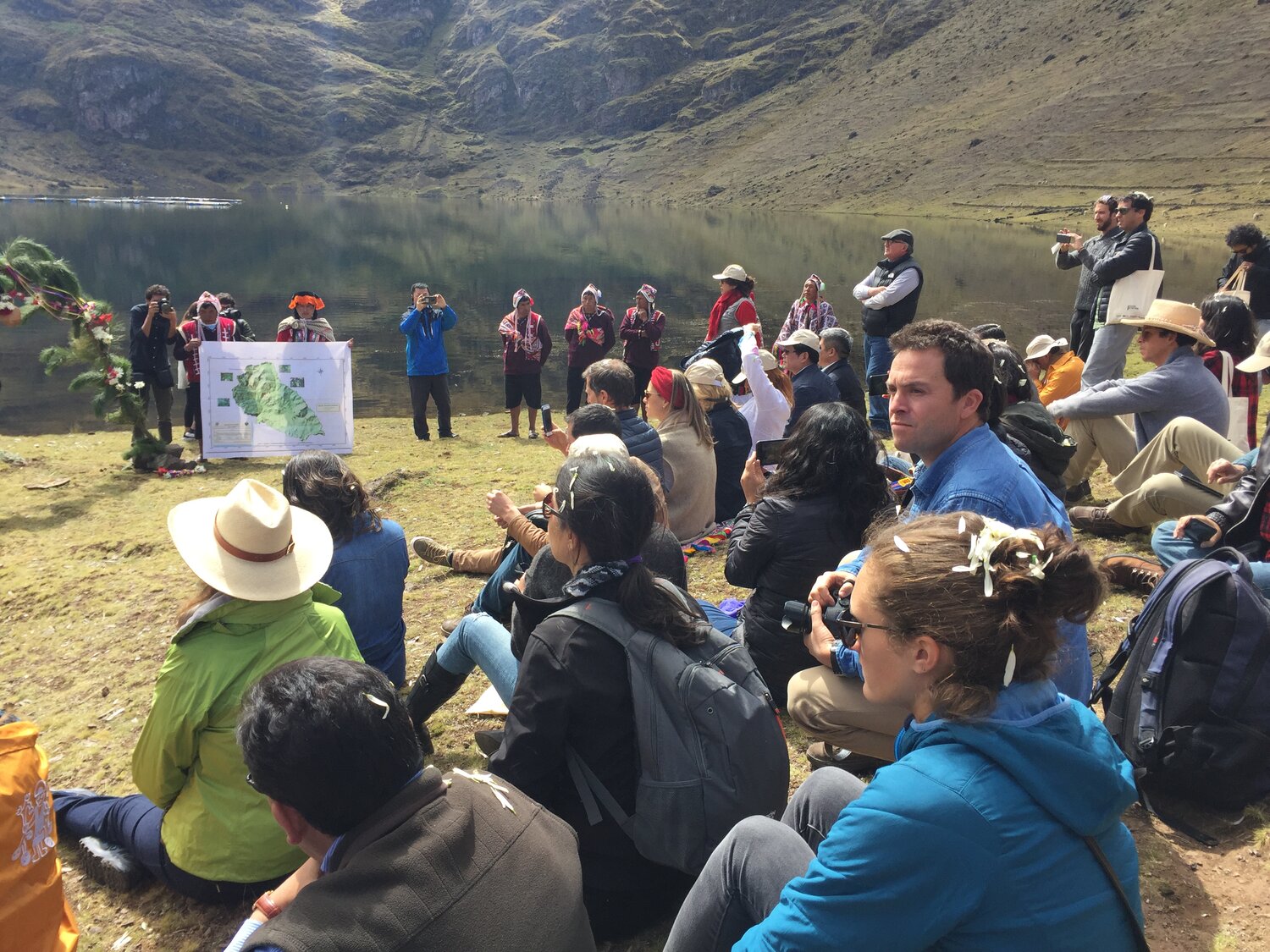
Crop Trust Executive Director, Marie Haga, and Vice President of Peru, Mercedes Aráoz, inaugurate the wild potato reserve at the Potato Park in Cusco, Peru.
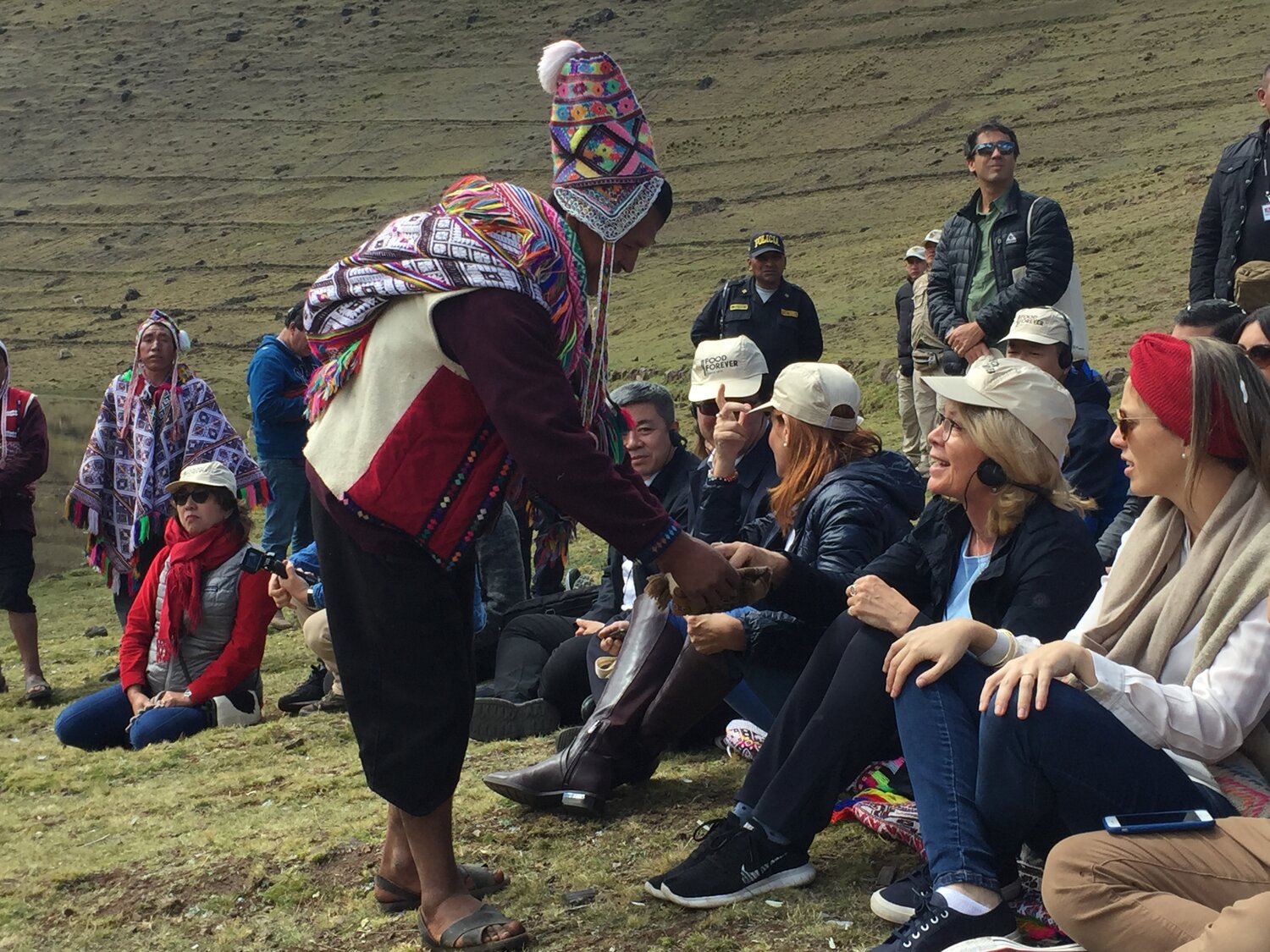
Showcasing wild potato relatives to guests at the Potato Park in Cusco, Peru.
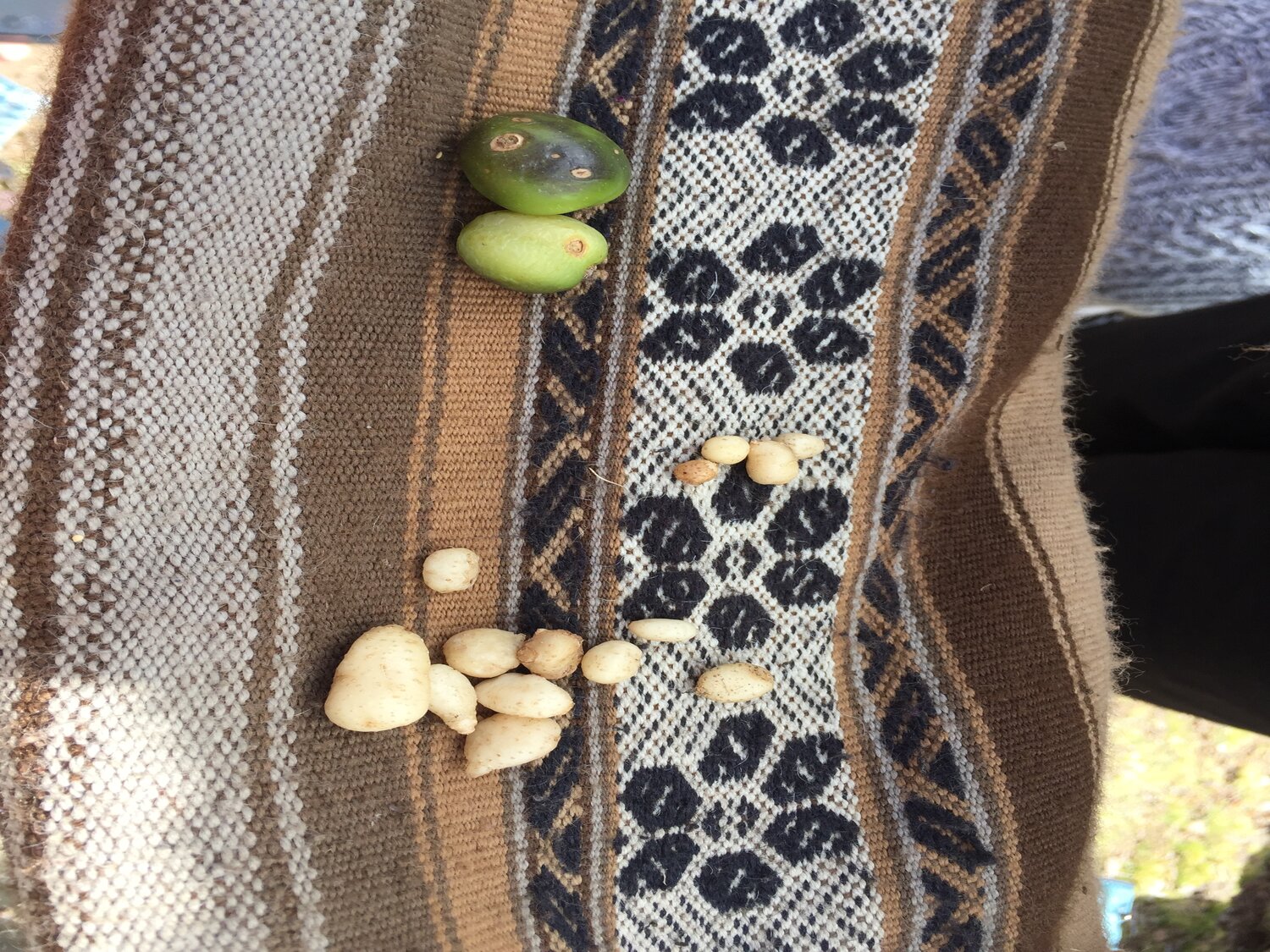
Wild potato relatives.
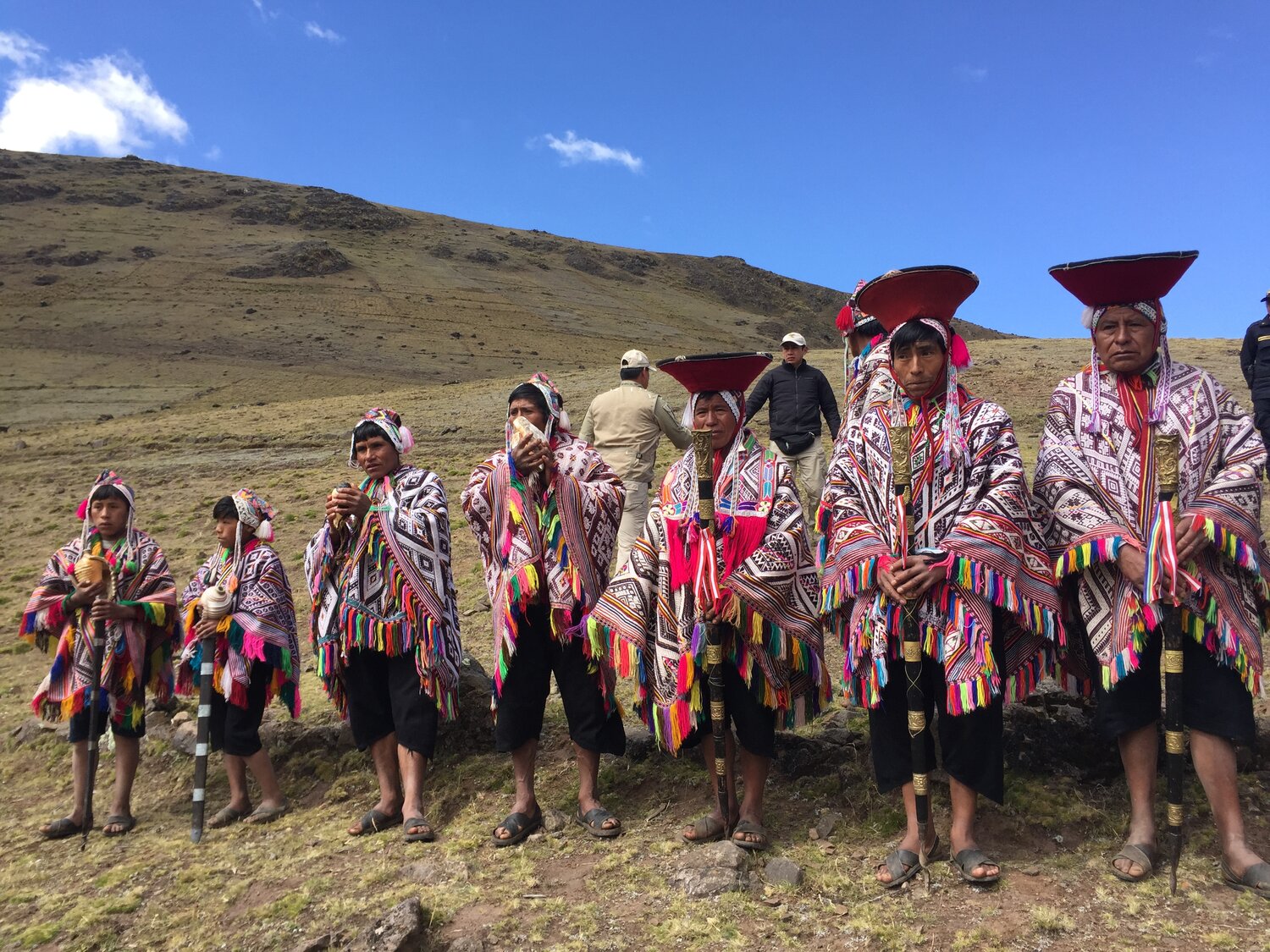
Six indigenous communities safeguard over 1,000 varieties of potato in the Potato Park in Cusco, Peru.
